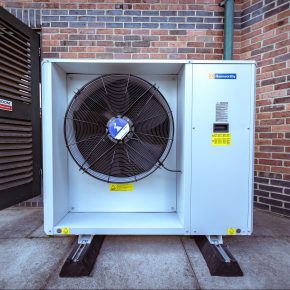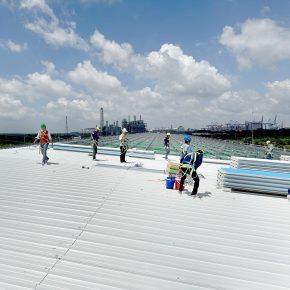
Managing ligatures: The official guidance you should know
Contour Heating discusses how its anti-ligature products can help to minimise the risk of suicide and self-harm in mental health establishments.
Every Trust in a given Local Authority will have its own anti-ligature policies. They will all be based on official NHS guidelines regarding the care and wellbeing of patients in mental health facilities.
This blog aims to draw together all the official guidance surrounding the eduction of ligature risks so that it is in one place. This should hopefully provide you with the clarity and knowledge required to make the most informed decisions when specifying and choosing products.
Legal Framework And Process/Methodology For Assessing Risks
This is a general overview, applicable to every workplace environment. Employers should seek to ensure that the health safety of their employees and persons not in their employment. This legislation is shared by both The Health and Safety at Work Act (1974) and The Management of Health and Safety of Work Regulations (1999).
Common Law also adds that if employees and others’ care is not reasonable, employers may be sued by anyone who suffers a loss, for damages.
Although this legal framework does not address ligature risks directly, it’s important to understand the responsibilities employers’ have in ensuring the safety and wellbeing of employees and those in their care.
The Challenge With Managing Ligatures
It is not possible for all ligature points to be identified and/or removed. We simply haven’t come up with a technical solution that will completely eliminate all ligature risks. Therefore, we aim to consciously state that our products do not eliminate the risk altogether. Instead, we say they reduce the risk to a standard that is of a high-quality.
According to The Camden and Islington NHS Trust (2017), a judgment must be made about the likelihood of something being used as a ligature point and the control measures required for that area. This is where specifiers and architects need to assess the design of their space and choose products aimed at limiting ligature risks.
Ligature Risks
The Care Quality Commission (2015) highlights that a risk posed by a ligature point is greater if:
1. It is in a private room that service users spend time in without direct supervision by staff.
2. It is in an area/ward used by high-risk patients.
3. The ligature point is between 0.7 metres and 4 metres from the ground.
4. The ward is designed poorly, with too few nurses on duty.
As an architect or specifier, we recommend that these risks are taken into consideration during the design process of any new projects.
As a ward manager, Contour recommends that you assess your current ligature risks in high-risk areas and consider any appliances/furniture that may need replacing or upgrading.
We also suggest that you assess those ligature risks that need to remain, as removing them may create a greater risk to the patient; for example, grab rails for elderly patients at high risk of falls.
The Care Quality Commission will pay close attention to the areas highlighted above during their inspection, so it’s worth assessing ligature risks in those four main areas.
Undertaking Ligature Risk Audits
The Camden and Islington NHS Trust (2017) recommends that you undertake a ligature risk audit every six months. In the event of an incident or near miss occurring, an audit should be taken following the incident.
Ligature Points On Specific Ward Types
The Standards for Inpatient Mental Health Services (2017) highlights the differing ward types and recommend certain measures to be put in place when managing ligature risks.
General In-Patient Wards And Psychiatric Intensive Care Units (PICU)
Potential ligature points should be managed as part of an individual and ward risk assessment.
Low Secure Services
There should be a system in place for staff to report any ligature points, and a prompt follow-up action if any are identified.
Furnishings should minimise the potential for fixtures and fittings to be used as weapons, barriers of ligature points.
Medium Secure Services
Bathroom and shower areas should be free of ligature points. There should also be a formal procedure in place to assess any clinical environment for ligature risks at least every six months.
High Secure Services
According to the Department of Health High Secure Building Design Guide, interiors, furniture, and fittings should be designed to ensure that they minimise the possibility for use for self-harm or as a ligature.
Section 136 Assessment Facilities (Places Of Safety)
Finally, assessment rooms in psychiatric facilities must have no ligature points.
Contour can be contacted at;
The Mansions
43 Broadway
Shifnal
TF11 8BB
Tel: 01952 290 498
Email: [email protected]
Visit Supplier's page
Latest news

16th April 2024
Mitsubishi Electric set to host CIBSE Journal webinar
Mitsubishi Electric will host a CIBSE Journal webinar on Wednesday 24th April 2024 at 1pm to discuss the legislation and initiatives driving changes in the way we will need to heat, cool and ventilate large commercial buildings to reach net zero emissions in the UK.
Posted in Air Conditioning, Articles, Building Industry Events, Building Industry News, Building Products & Structures, Building Regulations & Accreditations, Building Services, Facility Management & Building Services, Heating Systems, Controls and Management, Heating, Ventilation and Air Conditioning - HVAC, Information Technology, Pipes & Fittings, Plumbing, Seminars, Sustainability & Energy Efficiency, Training
16th April 2024
Hamworthy: What to consider when choosing a heat pump?
At the heart of an efficient heat pump system lies an important element: the refrigerant – Jason Allen, Commercial Product Manager, Groupe Atlantic UK, ROI & NA. Hamworthy Heating is a Groupe Atlantic brand.
Posted in Articles, Building Industry News, Building Products & Structures, Building Services, Facility Management & Building Services, Heating Systems, Controls and Management, Heating, Ventilation and Air Conditioning - HVAC, Pipes & Fittings, Plumbing, Retrofit & Renovation, Sustainability & Energy Efficiency
15th April 2024
EJOT Colorfast chosen for Kingspan’s highly sustainable new Asian factory
More than 120,000 EJOT Colorfast self-drilling fasteners have helped Kingspan to create a thermally superior, visually-appealing building envelope for its first purpose-built manufacturing plant in South East Asia.
Posted in Articles, Building Industry News, Building Products & Structures, Building Systems, Case Studies, Posts, Restoration & Refurbishment, Retrofit & Renovation, Roofs, Sustainability & Energy Efficiency
15th April 2024
ASSA ABLOY helps new manufacturing plant achieve LEED Gold certification
Improving sustainability performance is becoming a higher priority for building developers, owners and users. One consequence is fast-growing demand for green building certifications — and therefore specification. Specialist input can make the difference between hitting and missing a project target, as ASSA ABLOY explains here…
Posted in Access Control & Door Entry Systems, Architectural Ironmongery, Articles, BIM, Infrastructure & CAD Software, Building Industry News, Building Products & Structures, Building Regulations & Accreditations, Building Services, Case Studies, Doors, Facility Management & Building Services, Information Technology, Retrofit & Renovation, Security and Fire Protection, Sustainability & Energy Efficiency
 Sign up:
Sign up: